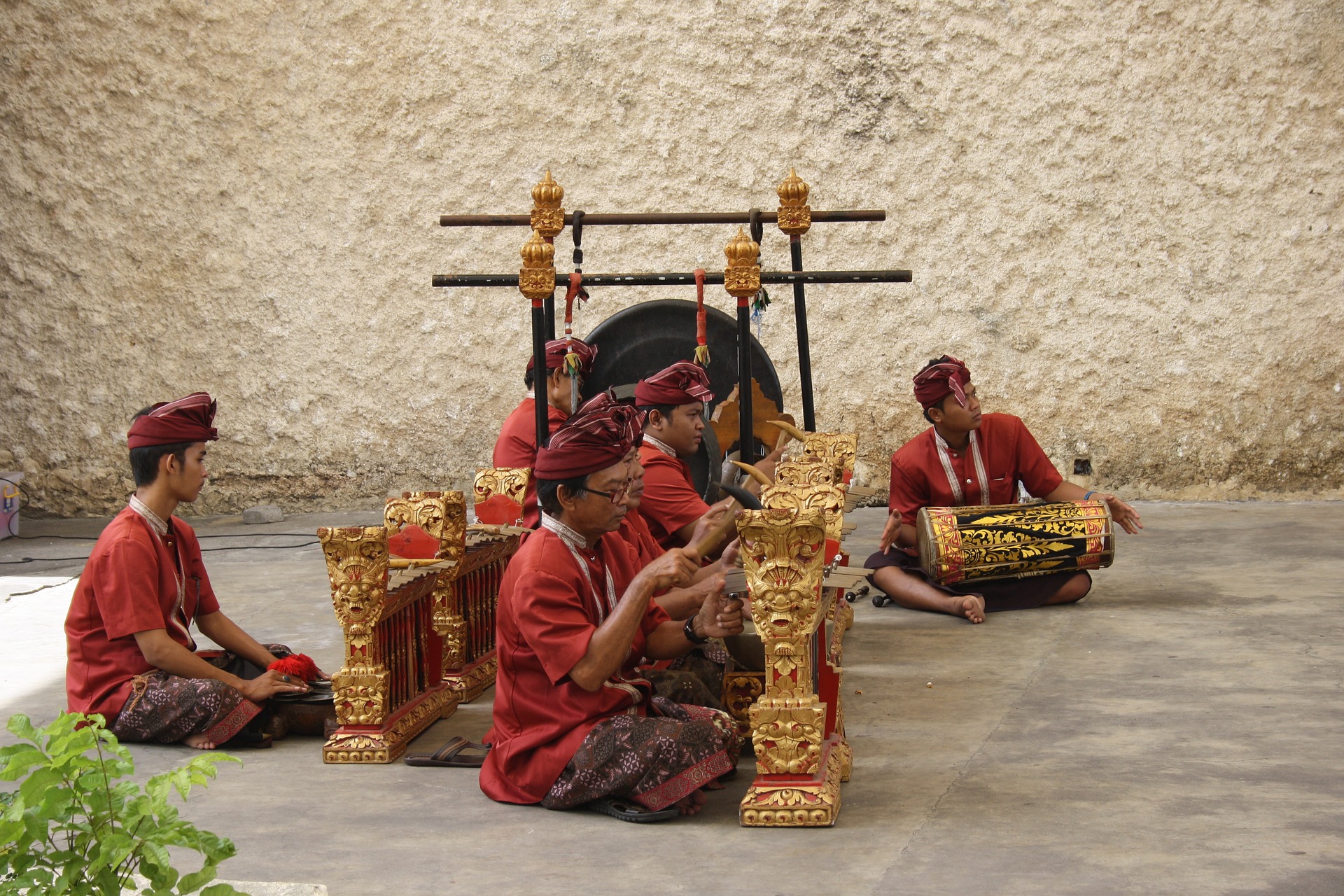Indonesia, located south of the continent of Asia, is a nation of many small islands. With a multitude of landmasses comes a multitude of cultures, religions, and traditions. Though a Dutch colony until 1945, native traditions, over 300 languages, and musics have survived along with many indigenous groups.
Indonesia is the largest Islamic nation, but Hindu and many other indigenous religions also persist.
"Gamelan" means emsemble
. A gamelan is a percussion-dominated ensemble, and there are many unique gamelans across Indonesia. Each gamelan has its own set of instruments, and even if two gamelans are very similar in instrumentation, they are still considered seperate gamelans.
Because of the sacred origins of gamelan, a reverent disposition is required to participate. Instrumentalists take off their shoes to play, and they do not step over the instruments. The instruments in a gamelan include gongs, chimes, metallophones, and various drums, and they are usually made of brass. Gamelan music typically employs an indigenous 5-note scale called a slendro.

There are many gamelans that could be discussed, but two important ones are the Javanese and Balinese gamelan traditions.
Javanese Gamelan is associated with the central court in Java, the Indonesian capital. It would be played for ceremonies and events in the royal court, and its majestic sound was meant to honor the semi-divine nature of Javanese royalty. Javanese gamelan music is cyclical in form, with one drummer leading by maintaining the cycle.
In Bali, the gamelan kebyar tradition grew out of Javanese gamelan, but during civil unrest of the 20th Century, it evolved into a faster, more explosive genre of music. The term kebyar means to flare up
, and this can be heard in the heart-racing performances on gamelan kebyar.